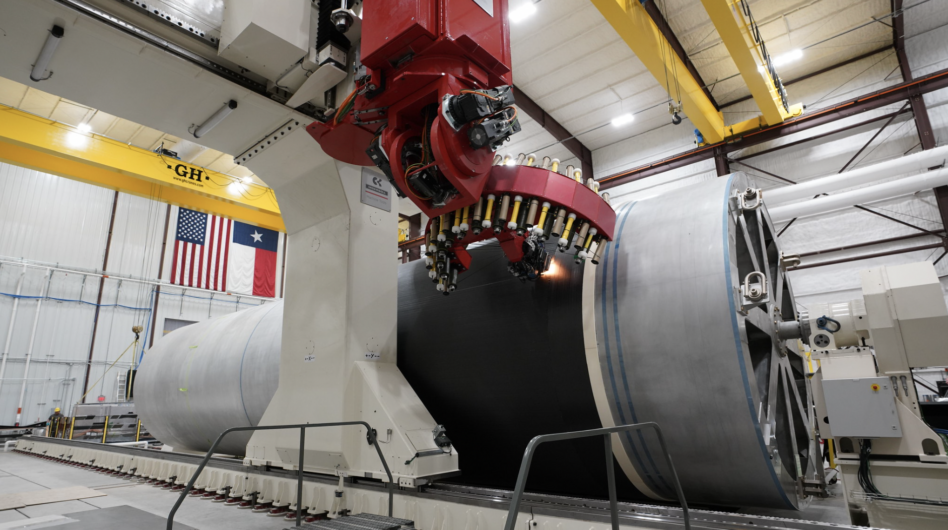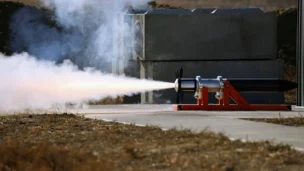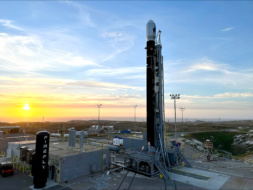Briggs, TX—In the heart of Texas ranch country, Firefly Aerospace is embracing the pioneering and do-it-all spirit of the frontier.
The company held a ribbon-cutting ceremony yesterday celebrating the expansion of its rocket production facility from 92,000 to 207,000 sq ft to support its “launch, land, orbit” initiatives. Firefly—which is best known for its Alpha rocket—plans to introduce three next-gen vehicles over the next 24 months to cover the three facets of space travel.
Payload got a peek inside the new digs on Wednesday, where the future of Firefly was on full display.
In one building, engineers were fine-tuning the company’s next-gen Miranda engine. A short walk to the next building revealed the construction of the new Medium Launch Vehicle/Antares 330 rocket. Nearby, the Elytra spacecraft was being developed, and down the road, engineers were putting the finishing touches on the Blue Ghost lunar lander.
Simultaneously developing three new vehicles is no easy task, especially as the company remains laser-focused on ramping up its Alpha rocket launch cadence, which it plans to launch four times this year and six to eight times in 2025. But that’s the rocket ranch way.
Antares 330 / Medium Launch Vehicle
Northrop Grumman joined forces with Firefly in 2022 to co-develop the Antares 330 vehicle, which is replacing the Russian-engine powered Antares 230 rocket. Firefly is building the first stage (including seven Miranda engines), and Northrop will contribute to the upper stage and avionics. The first stage will also be used for the co-developed Medium Launch Vehicle (MLV) rocket.
“One of the monumental things that changed the trajectory of this company was this partnership,” Firefly chief Bill Weber said at yesterday’s ceremony. “We said let’s take the very best of mature space and harness that with the innovation of new space.”
Development of the new rocket is moving right along and is on track for its maiden flight in 2025.
- The vehicle will be capable of lifting 16,000 kg to LEO.
- Firefly is scaling up the Alpha architecture to build the larger launcher.
- Firefly built its Miranda engine (230,000 lbs of thrust) in just over a year, completing a hot-fire test in late 2023.
Reusability: Firefly plans to eventually incorporate first-stage reusability into its MLV. “Anyone who comes into this market that doesn’t have reusability on their roadmap is a doomed program,” said Adam Oakes, Firefly’s VP of launch vehicles. However, the company does not want to over-promise and under-deliver, electing to demonstrate an MVP expendable product before engineering the vehicle for reusability.
Blue Ghost Lunar Lander
Firefly has secured over $230M in NASA CLPS contracts to build two Blue Ghost landers for lunar payload delivery. At the Firefly facility, Blue Ghost 1—slated to launch this year—was in the midst of late-stage preparations, with Honeybee Robotics engineers integrating their payload onto the vehicle.
Firefly is taking lessons learned from Peregrine 1 and IM-1—which have already made their CLPS-backed lunar voyages this year with mixed success—to avoid duplicating mistakes. This includes double-checking similar instruments and tweaking systems when they can. Additionally, post-launch, the company will spend time in a highly elliptical Earth orbit to check its systems and work out any kinks before heading to the Moon.




